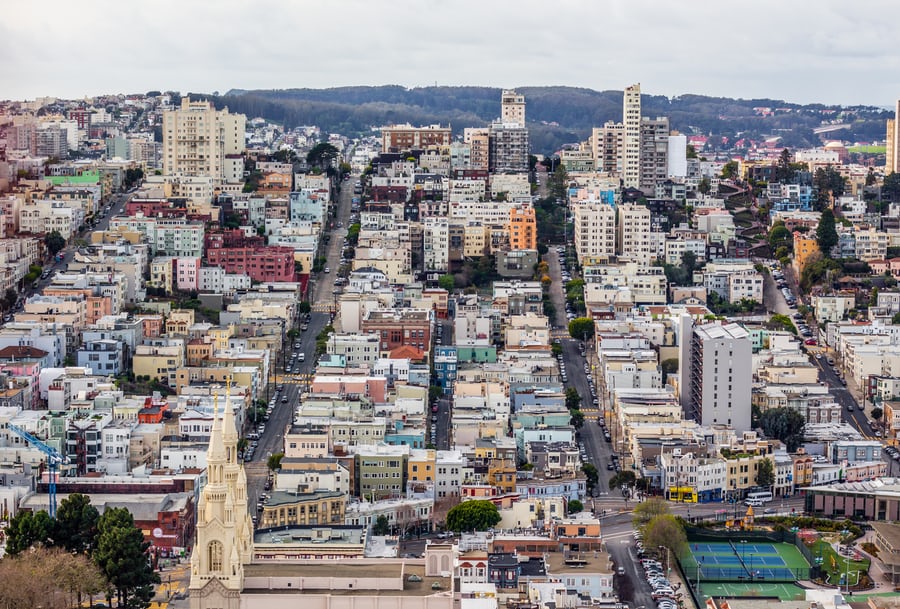With Manhattan median rents officially topping $4k, I’m shocked to hear one of the most expensive cities in the US, pricier than what one would bargain per sqft for in Manhattan, is seeing its rents shockingly decline to lower levels than when Covid first hit in 1Q 2020.
With income levels averaging $150k+ per individual to cover the median home price in San Francisco of $1.5m, these estimates top New York City by quite a margin. Given the number of tech workers at FAAMGs earning close to $230k fresh out of school in the Bay area, it isn’t unusual to see rents near six figures even for a studio.
As a landlord myself, I charge six figures per year for a 1 bedroom in Manhattan and that was even a hard sell to get in 2021. Luckily it is in a prime district, Battery Park where many financial firms are headquartered and for a premium, stealth wealth residents with more than 3+ family members, dog walkers, and sitters reside for some peace and convenience across the West Side highway.
Demographic shifts, income household levels, reputable schools, safety, supply/demand of inventory, and employment opportunities drive up real estate prices the most. Given land is scarce in cities, during the pandemic it was surprising that past the first peak (March 2020), bargains started quickly disappearing as youngsters from the Heartland and Southern belts fled to the city, and more families fled out to the suburbs for grass and a puppy they now regret.
Yet, all in all, a small elite subset of those who worked in the city and had the option of remote work, still kept their property there and quickly jumped on a deal if they saw one coming nearby such as on LI. In fact, the dirty little secret of covid was that it was the best years for the top 10% and above. They got to Netflix and Chill, buy second and third homes, and live their best life. As long as they were healthy, wealth kept streaming in.
Luckily, climbing mortgage rates means fewer mortgage applications and cooling of demand, and more inventory. We are finally seeing more normal housing levels compared to the hot housing market across the nation for the past 2 years.
Particularly in the Sunbelt, the heartland of America, and 18 hr cities demand was fierce and competitive. Luckily if you invest with Fundrise (not sponsored), you can own various properties through their crowdfunding platform without ever having to manage or deal with tenants. This is a great way to add real estate exposure into your portfolio as a natural hedge against inflation and an additional passive income stream.

San Francisco Slow Down
Since I’m a native New Yorker, I’m not too familiar with the San Francisco real estate landscape but my initial thoughts after hearing this exciting unexpected news for real estate junkies such as myself who spend my Sundays going to open houses for comparables is a true thrill!
I wouldn’t be surprised if rent prices have already curtailed in San Francisco given tech workers from crypto to FAAN/MGS such as Netflix and Robinhood have fled since the recent layoffs. With hundreds of thousands of fresh new graduates clamoring to jump onto the startup train, I’ve sure rents have declined far earlier since they have ventured off somewhere else more realistic to build wealth by compromising a dangerous lump sum at a lethal tech company for lower marginal taxes and better quality of life without living paycheck to paycheck earning $250k (Read here). Alongside layoffs, Twitter employs thousands of junior engineers and fresh grades each year that they may have already fled a few months ago once Elon decided to take Twitter private.
Another possible driver to the slump in rents in San Fran is the recovered demand/supply mechanism. Those who wanted to move already did so during the heat of the pandemic and demand has already slowed while supply has gotten back to normal levels bringing down prices to more normalized levels.
Compared to cities across the nation, there was extraordinary pent-up demand in Silicon Valley for the past few years after the dot-com bubble with SPACS and speculation/memeification mixed with the appeal of equity-based compensation and juicy bonuses since the record closes in equity markets in 20 & 21.
Miami and Austin, hot cities most notable for their weather, real estate, and connections have risen to fame since 2020 as financiers and business owners ventured off to the great lagoons and resorts. Compared to NYC or Seattle, 24 hr cities lost their luster for a brief period in time and people were searching for more accommodative and climate-friendly places to work such as in San Francisco, the tech hub of the world, aka the Wild West as salaries, were quadrupling and young city dreamers with only a suitcase took flight.
Given all this rapid demand and euphoria in the housing market in March 2020, demand/supply chain effects are more priced into the market more than ever before. They could very well be reversing course all the way back to March 2020 times. Only time will tell if the residents of San Francisco are just there to be nearby Facebook HQ for the temporary paycheck or to live a truly better life. However, if rents are at their lowest point in over 2 years, more froth and overpricing will eventually occur and the hot pandemic housing market will spiral again. At this point, only higher borrowing costs can undo the damage!
For now, while it lasts, if you are planning on making the switch and have more diligence and patience than most folks who jumped into the housing market due to FOMO at the wrong time and now are regretting it as 80% as first-time Millennial home-buyers are, it’s not a bad time to dip into the market.
Real estate isn’t meant to be an in-and-out thing. Try my strategy of routinely visiting open houses for the next few months/years on weekends even when you aren’t remotely interested in moving. You will gain a competitive edge, save time, and not get ripped off when it comes time to knowing what you do/don’t want in your eventual dream home.
To be a true real estate investor not only a passive consumer (tenant), you need to know what’s happening in the markets at all times to smell a deal before anyone else can and when others are greedy, remember to be fearful!
Don’t wait until you need to move or your HOA fees increase unexpectedly.
Pace yourself and take an overarching view to see the bigger picture, including the residence itself, not just via the Zillow virtual tour.

